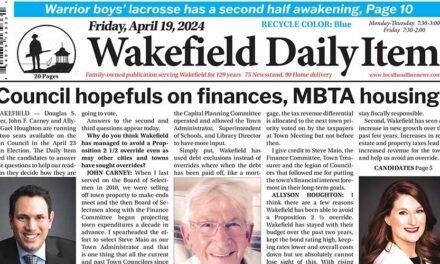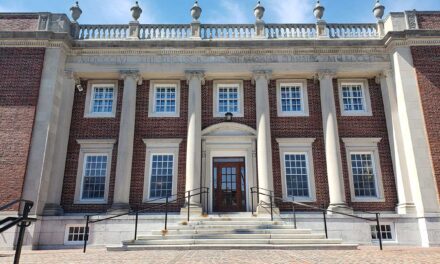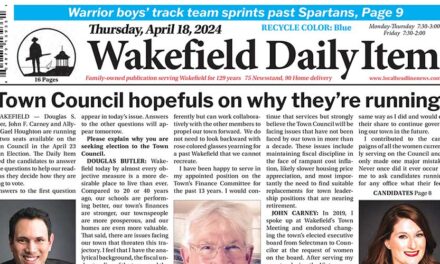Published in the July 14, 2015
By MARK SARDELLA
WAKEFIELD — After more than a year, there seems to be little in the way of agreement among members of the Lake Quannapowitt Water Quality Committee about the best ways to improve the condition of the Lake, which has been plagued in recent years by algae blooms that turn its waters a deep green color by late summer.
At last night’s meeting, various members advocated for their favored solutions. Some lean toward deploying SolarBee water circulators, while others advocate a longer term watershed approach of reducing phosphates entering the Lake from street runoff and lawn fertilizers. Others want to treat the inflow from storm drains. Another member maintains that restoring flow from a blocked Reading brook would create enough water turn-over to keep the Lake clear of algae.
Town Engineer Michael Collins, who chairs the committee, suggested the possibility of providing a local system for homeowners to test their soils and hopefully find that they don’t need to use the phosphate-based fertilizers that find their way into the Lake and foster algae growth.
Collins also talked about organizing a committee visit to Santuit Pond in Mashpee, which is using SolarBee water circulators to fight algae. But member Alison Simcox questioned the benefit of such a field trip, insisting that SolarBee success stories were merely anecdotal and not supported by peer reviewed literature.
She also opposed the SolarBees on aesthetic grounds, saying the machines would make the Lake “look like a water treatment plant.”
Dennis Cloherty again advocated for what he has maintained would be a low-cost solution to the algae problem: Restoring inflow from the long ago blocked Ash Brook in Reading. Cloherty claimed that the water from the brook recently “tested cleaner than the water that comes out of your tap” and would turn the Lake water over 20 times a year.
Cloherty said that the inflow from Reading was blocked in the 1930s due to concerns over sewage but that is no longer an issue. He insisted that restoring the Lake’s “natural high-water mark” by opening those conduits would solve the algae problem.
Another suggestion to adjust the outflow at the head of the Lake to get rid of the scum that forms on the surface was met with skepticism from Collins who said that the zone of influence of the outflow would only be about 10-15 feet. Member Doug Heath agreed that the outflow of surface algae would be trivial in the vast volume of the Lake.
Simcox said that the only way to control the algae was to implement a watershed solution to reduce the phosphates entering the Lake.
“I don’t see any short-term solutions,” she said.
But, while agreeing that phosphates entering the Lake from the watershed should be addressed, Collins wondered if the town would be willing to wait decades for a watershed approach to work and expressed openness to some short term measures in the meantime.
Committee member Jim Murphy questioned whether the town had sufficient money to deploy SolarBees and also work on the watershed approach. He noted that the main sources of phosphates are the storm drains. He advocated starting with the worst storm drain but again wondered if there would be enough money available to look at all of them.
Member Doug Heath reported on a device that was recently purchased for the committee’s use by the Friends of Lake Quannapowitt. Heath explained that he would place the device at various locations and various depths to measure water temperature and dissolved oxygen levels and to determine if phosphorus is being released into the water column.
Heath said that separate tests would still need to be done in August to determine the level of the toxins released by the algae in the Lake.
Simcox cast doubt on one of the stated goals of restoring swimming to the Lake, calling it “not realistic,” citing practicalities like lifeguards, new bathrooms and regular bacteria testing.
But Murphy and Jim Luciani insisted that restoring swimming to limited areas of the Lake was very doable.
Member Bill Boodry asked what the committee would be recommending in its report to the Board of Selectmen in September. Boodry said that he would hate for the committee to have spent all this time without coming forward with a couple of reasonable solutions.
Committee members noted that the selectmen and eventually Town Meeting voters would need to know the cost of any recommended measures. It was agreed that the expertise of a consultant would be needed to accurately attach cost estimates to the various options.




